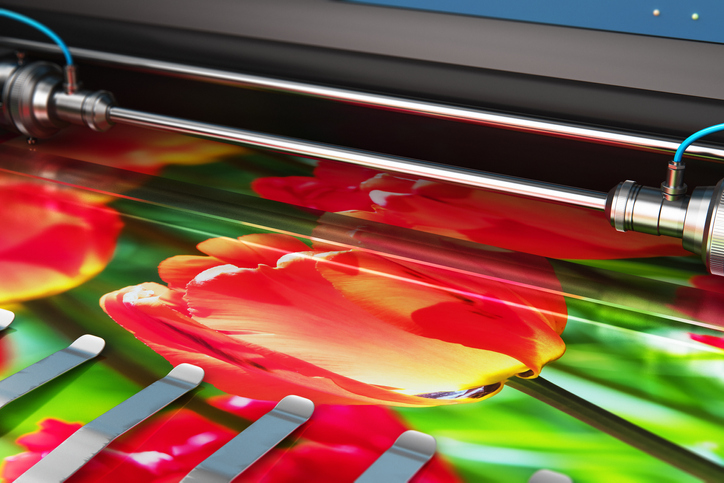When you want to flaunt your finest, large-format printing can make an oversized impact!
Large-format printing includes products printed at a length of 18-100 inches with a minimum width of 60 inches. Some of the most popular items include posters, window graphics, yard signs, vehicle wraps, vinyl banners, media backdrops, and more.
While large-scale graphics are stunning, these projects require special preparation, so these images remain vibrant and sharp when stretched to larger-than-life proportions.
If you plan to go BIG, here are some factors to consider.
Communicate from the Start
When diving in on a large-scale printing, create a detailed brief and use this to speak to your printer as early as possible.
Try to include everything from the size, design, materials, and deadlines. Your printer will work with you to be sure your ideas are achievable, and the timeline is realistic.
Set Appropriate Image Specifications
As you connect with a printer, be sure your images match the required specifications.
Pixels per inch (or PPI) is the standard measurement for image resolution. PPI refers to the density of pixels per square inch of space they occupy. The higher the PPI, the sharper your image will appear as a large-format graphic. As a general rule, most commercially printed materials require at least 300 PPI.
The viewing distance required for your project can be a factor in selecting the appropriate specs.
Select Clear and Legible Fonts
Since most large-format products are meant to be viewed from a distance, fonts are a big deal.
Usually, sans-serif fonts are easier to read than script or serif fonts. Fonts that are too bold or have wide spacing between letters are also very difficult to read when viewed from afar. To check your font’s legibility, take a few steps back from your computer and evaluate from a different perspective.
Limit the number of fonts you use, and don’t crowd the design!
Choose Your File Formats
There are generally two file types in large-format printing: EPS (Encapsulated PostScript) and TIFF (Tagged Image File Format).
EPS – such as .eps or .ai files – can contain both text and graphics and are a better option for vector images, which use algorithms to increase an image size (rather than pixels), which preserve image quality when scaled up.
TIFF files are best for high-quality graphics, with color depths ranging from 1 to 24 bits. They can also support special Adobe features like layering and transparency.
Not sure which format is best? Your printer can help and may even have software presets they can send you in advance. No matter which file type you select, don’t flatten the original file before sending it to print. Keep an editable file to make the design and printing process easier!
Get Color Samples
Did you know there are two primary ways of displaying colors?
Anything designed for a screen – such as digital banners or a website – uses an RGB (red, green, blue) color model, while printed materials use CMYK (cyan, magenta, yellow, black). RGB looks great on a screen but can look dull when printed, so you can save yourself extra hassle by converting your design file color to CMYK before you begin. If you haven’t, double-check with your printer about how to proceed from where you’re at.
Amplify Your Voice
Large-format printing offers huge promotional potential for your business.
But it can be a big investment, which is why it’s important to get things right the first time. Whatever your large-format printing needs, our experienced team can help! Whether you’re looking to build brand identity or bring curb appeal to your business, upgrade your customer experience with magnificent large-scale visuals.

